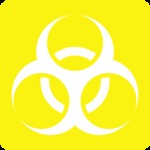The Medical Waste Tracking Act of 1988 defines medical waste as "any solid waste that is generated in the diagnosis, treatment, or immunization of human beings or animals, in research pertaining thereto, or in the production or testing of biologicals." Medical waste can be classified into four different categories: infectious, hazardous, radioactive, and general.
 Infectious waste
Waste that has the possibility of causing infections to humans. It can include human or animal tissue (blood or other body parts), blood-soaked bandages, discarded surgical gloves, cultures, stocks, or swabs to inoculate cultures. Many waste streams in this category, including human or animal tissue, can also be labeled as pathological waste, which requires specific treatment methods. This type of waste is also called biowaste or biomedical waste.
Infectious waste
Waste that has the possibility of causing infections to humans. It can include human or animal tissue (blood or other body parts), blood-soaked bandages, discarded surgical gloves, cultures, stocks, or swabs to inoculate cultures. Many waste streams in this category, including human or animal tissue, can also be labeled as pathological waste, which requires specific treatment methods. This type of waste is also called biowaste or biomedical waste.
 Hazardous waste
Waste that has the possibility to affect humans in non-infectious ways, but which meets federal guidelines for hazardous waste under the Resource Conservation and Recovery Act (RCRA). Hazardous waste includes chemicals, both medical and industrial. Some hazardous waste can also be considered infectious waste, depending on its origin and exposure to human or animal tissue prior to discard. Old drugs, including chemotherapy agents, are sometimes hazardous. Although not RCRA waste, sharps are hazardous in that they can cause injuries. Among waste managers, sharps are objects that can puncture or lacerate the skin; they include needles and syringes, discarded surgical instruments such as scalpels and lancets, culture dishes and other glassware.
Hazardous waste
Waste that has the possibility to affect humans in non-infectious ways, but which meets federal guidelines for hazardous waste under the Resource Conservation and Recovery Act (RCRA). Hazardous waste includes chemicals, both medical and industrial. Some hazardous waste can also be considered infectious waste, depending on its origin and exposure to human or animal tissue prior to discard. Old drugs, including chemotherapy agents, are sometimes hazardous. Although not RCRA waste, sharps are hazardous in that they can cause injuries. Among waste managers, sharps are objects that can puncture or lacerate the skin; they include needles and syringes, discarded surgical instruments such as scalpels and lancets, culture dishes and other glassware.
 Radioactive waste
Radioactive waste can be generated from nuclear medicine treatments, cancer therapies and medical equipment that uses radioactive isotopes. Pathological waste that is contaminated with radioactive material is usually treated as radioactive waste rather than infectious waste. Most hospitals generate radioactive waste as do some doctors' offices and veterinary offices if they offer brachytherapy.
Radioactive waste
Radioactive waste can be generated from nuclear medicine treatments, cancer therapies and medical equipment that uses radioactive isotopes. Pathological waste that is contaminated with radioactive material is usually treated as radioactive waste rather than infectious waste. Most hospitals generate radioactive waste as do some doctors' offices and veterinary offices if they offer brachytherapy.
 General waste (Municipal Solid Waste)
General waste (Municipal Solid Waste)
One reason medical waste management is so challenging is that a given batch of waste can be multihazardous - posting rhreats in more than one way.
An alternative classification scheme comes from The World Health Organization. The WHO classifies medical waste into:
About household medical waste.
Pathological waste is included in the above categories, but is designated separately because of the potential psychological impact on observers. It consists of recognizable tissues, organs, and body parts derived from animals and humans. If you can tell the waste came from a living organism, it is pathological waste:. Material removed from the body in surgery and fluids and solids removed in autopsies is pathological waste, with the exception of teeth. More on pathological waste.
In the United Kingdom the term clinical waste is used. The UK’s Controlled Waste Regulations (1992) defines clinical waste as having some human or animal tissue, used swabs or dressings, pharmaceutical products, blood or bodily fluids, or syringes, needles or other sharps.
In the US the term regulated waste is used in healthcare contexts mostly to refer to worker safety standards and procedures. OSHA promulgated rules for dealing for dealing for dealing with bodily fluids called the Bloodborne Pathogens standard. It refers to regulated waste as blood or "other potentially infectious materials" (OPIM) and items contaminated with these materials as well as pathological and microbiological wastes containing blood or OPIM. (Feminine hygiene products do not count as regulated waste, and OSHA has ruled that bandages that are not saturated to the point of releasing fluid if compressed don’t count either.)
OSHA’s Bloodborne Pathogens Standard requires that healthcare facilities dealing with regulated waste have an Exposure Control Plan to protect workers and minimize the chances of transmission of hepatitis C, hepatitis B, and HIV. The plan should specify which employees have routine contact with blood and blood products and what to do after an exposure.
OSHA also requires that regulated waste be put in closable containers and that if there is any chance of leaks from those containers, that a second container be employed.
PDF summary of types (one page)
